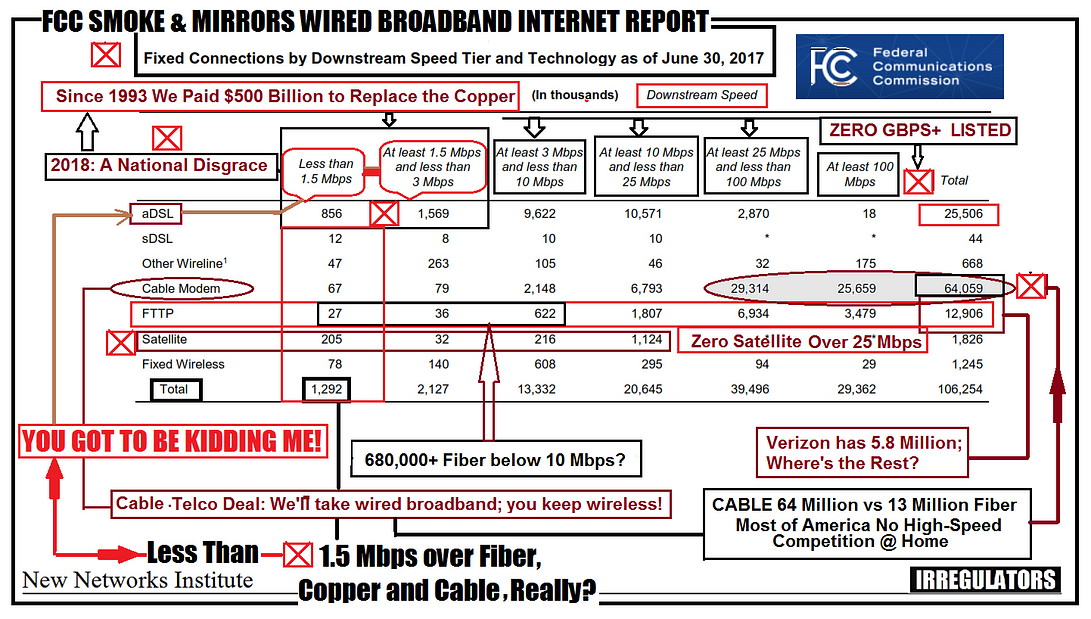Click for the FCC Numbers-Only Version of this Exhibit.
As I stare at the various pie charts and exhibits in the FCC’s latest report on broadband in America, “Internet Access Services: Status as of June 30, 2017”, published November 2018, only one thing comes to mind: Congress needs to investigate how this smoke and mirrors data is being used to create harmful public policies.
Back in March, 2011, I wrote about the FCC’s highly inaccurate National Broadband Map Database, where the companies listed did not offer service at my address or at the speeds listed.
Seven years later, and trying to reverse-engineer the number of broadband services, especially the accounting of the “Fiber to the Premises”, FTTP, here are a few startling long-term issues and new discoveries. In the industry, these are some of the dirty, little secrets.
Quoting the FCC, there are various caveats.
· “All facilities-based broadband providers are required to file data with the FCC twice a year (Form 477) on where they offer Internet access service at speeds exceeding 200 kbps in at least one direction.
· “Fixed providers file lists of census blocks in which they can or do offer service to at least one location, with additional information about the service.
Please notice the words and phrases: “census blocks”, “200Kbps in at least one direction”, “they can” and “at least one location”. We will address them in a moment.
How Big Is One Census Block?
A census block is sort of like the area of a postal zip code. And it is directly tied to a specific geography with people living and working at specific locations. Sounds obvious until you examine how they count these locations.
According to Current 360
“Block groups generally contain between 600 and 3,000 people, with an optimum size of 1,500 people… Each census tract contains at least one block group, and block groups are uniquely numbered within the census tract. A block group is the smallest geographical unit for which the census publishes sample data.”
Smoke & Mirror Competition
The FCC and phone companies claim that there is competition and yet, this next FCC caveat about this data tells us that while the database may show a competitor, you, the customer, may never be able to get service from them.
The FCC writes:

